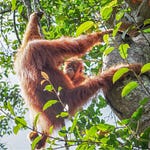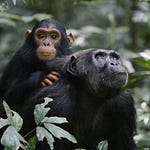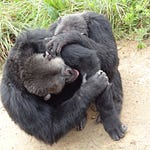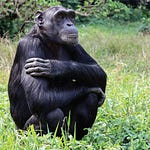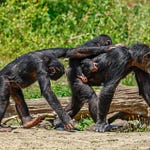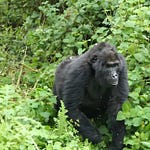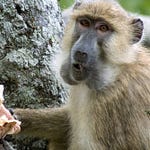What Makes Us Talk the Way We Do to Babies?
Spend a few minutes with a parent and their baby, and you’re likely to hear a familiar sing-song voice. This style of speaking—slower, higher-pitched, often repetitive—is nearly universal across cultures. But it turns out this behavior, so foundational to human development, sets us starkly apart from our primate cousins.
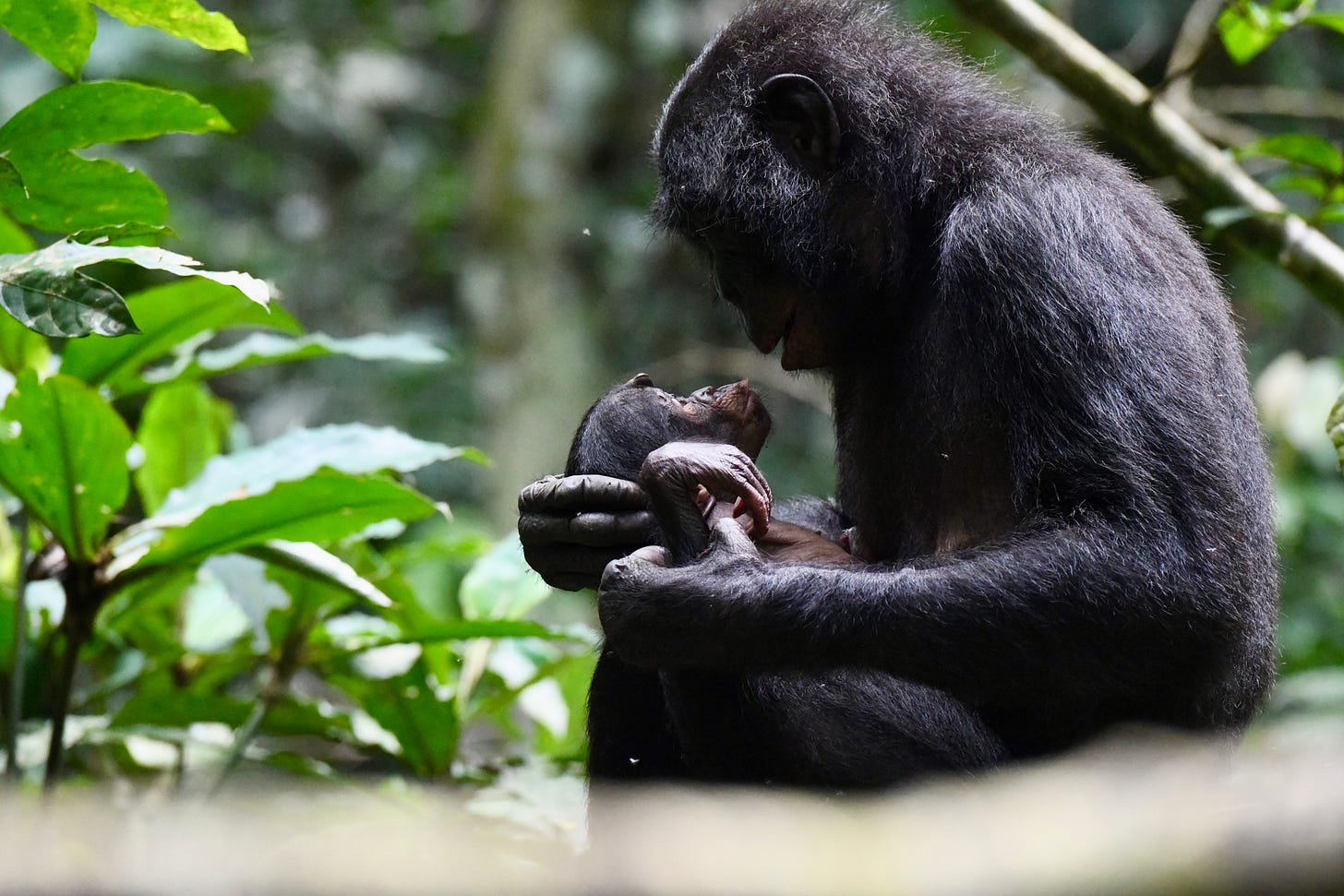
A team of primatologists and linguists from Switzerland, France, Germany, and the U.S. has conducted the first large-scale comparative study1 of vocal interactions between infants and caregivers across all five great ape species: humans, chimpanzees, bonobos, gorillas, and orangutans. Their findings, published in Science Advances, suggest that humans are not just more verbose with their infants—they are exceptional.
"Humans produce infant-directed vocal communication at levels that drastically exceed any other great ape species," the study reports.
The researchers used a standardized approach across wild and naturalistic human settings, analyzing thousands of hours of recorded vocalizations. Their results? On average, humans directed vocal communication at infants 400 times more often than bonobos, 70 times more than chimpanzees, and over 250 times more than orangutans. Even among mothers specifically, human-directed speech far outpaced that of any other species.
What We Say, and Why It Matters
Infant-directed speech isn’t just cute—it’s developmentally potent. Decades of research have shown that babies learn language faster and better when caregivers use this style of communication. It captures attention, emphasizes structure, and often serves as a scaffold for social bonding.
“The vocal register we use with babies—what linguists call ‘motherese’—helps infants segment speech and grasp meaning faster,” explains the research team.
But where did this behavior come from? Since language doesn’t fossilize, the evolutionary story of how humans learned to talk to babies has long relied on indirect evidence. This study offers a comparative lens, suggesting that our ancestors may have once learned language more passively, much like nonhuman apes today, before active, directed speech to infants became common.
Silent Forests and Chattering Nurseries
Among our great ape relatives, the communication landscape looks very different. Bonobos and chimpanzees do occasionally direct vocalizations at infants—but such interactions are rare. Instead, ape infants mostly overhear adult vocalizations not meant for them. The surrounding chatter may still play a role in learning, but it lacks the tailored scaffolding that human infants enjoy.
One outlier in the study was the orangutan. These apes are more solitary and vocalize far less overall. Infant orangutans were found to receive not only the least directed speech but also the lowest amount of ambient vocal input.
This suggests that infant-directed communication is not simply a byproduct of vocality or group size. It’s something that evolved specifically within the human lineage.
“There must have been a massive expansion in the amount of infant-directed communication within the hominin lineage,” the researchers argue.
Gestures and Beyond
Although the study focused on vocalizations, researchers note that gestures might tell a different story. Great apes are known to use rich gestural repertoires—especially with infants—and some of these gestures show characteristics similar to human baby talk, such as repetition and elaboration.
This opens the door to the possibility that infant-directed communication began in the gestural domain before transitioning—or expanding—into vocal forms in early hominins. The paper calls for future research to examine gesture-based communication across species with the same rigor applied here.
Learning by Listening In
Interestingly, when it came to surrounding vocal input—communication that infants hear without being directly addressed—humans and chimpanzees were nearly identical. Bonobos received slightly more, and orangutans notably less. This highlights that nonhuman apes may still learn socially, by eavesdropping, much like children do in some human cultures where directed baby talk is rare.
This is consistent with ethnographic studies of language acquisition in small-scale societies. In places like the Tseltal Maya or among the Shipibo-Konibo in the Peruvian Amazon, infants are rarely spoken to directly—but they still learn language effectively.
“Surrounding vocal communication could play a more important role in language acquisition than previously assumed,” the authors note.
The Origins of “Baby Talk” and Human Language
So what drove humans to speak so intimately to infants, and so often? The researchers suggest a link between infant-directed speech and the evolution of vocal learning—the ability to acquire vocalizations through imitation and practice. This capacity is rare in mammals but shared with some whales, dolphins, bats, and songbirds—all of which also exhibit some form of infant-directed vocal behavior.
In humans, this form of communication may have helped transform a biologically grounded vocal system into a cultural one, enabling the intergenerational transmission of language. It allowed infants to enter a world of words early and with clarity.
In short, "baby talk" may be one of humanity’s earliest and most enduring teaching tools.
Final Thoughts
This study doesn’t just chart the frequency of coos and gurgles—it points to a deeper shift in how human ancestors began to shape the minds of the next generation. Direct speech to infants may have helped birth language itself, not just as a means of communication, but as a vehicle for culture.
“These data provide support for the hypothesis that infant-directed vocal communication played a critical role in the emergence of human language,” the authors conclude.
Related Research
Here are three additional studies that expand on the themes of vocal learning, language origins, and early hominin communication:
Fröhlich, M., Wittig, R. M., & Pika, S. (2016). Should I stay or should I go? Initiation of joint travel in mother–infant dyads of two chimpanzee communities in the wild. Animal Cognition, 19(3), 483–500. https://doi.org/10.1007/s10071-015-0948-z
Takahashi, D. Y., Liao, D. A., & Ghazanfar, A. A. (2017). Vocal learning via social reinforcement by infant marmoset monkeys. Current Biology, 27(12), 1844–1852.e6. https://doi.org/10.1016/j.cub.2017.05.004
Fernandez, A. A., & Knörnschild, M. (2020). Pup-directed vocalizations of adult females and males in a vocal learning bat. Frontiers in Ecology and Evolution, 8, 265. https://doi.org/10.3389/fevo.2020.00265
Wegdell, F., Fryns, C., Schick, J., Nellissen, L., Laporte, M., Surbeck, M., van Noordwijk, M. A., Masi, S., Hellwig, B., Willems, E. P., Zuberbühler, K., van Schaik, C. P., Stoll, S., & Townsend, S. W. (2025). The evolution of infant-directed communication: Comparing vocal input across all great apes. Science Advances, 11(26), eadt7718. https://doi.org/10.1126/sciadv.adt7718


